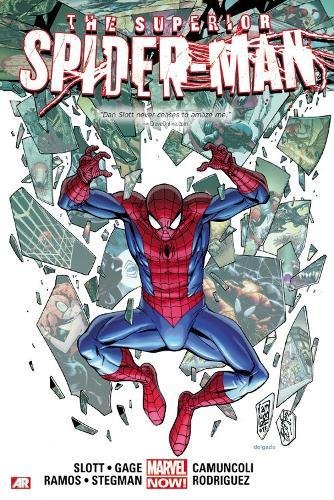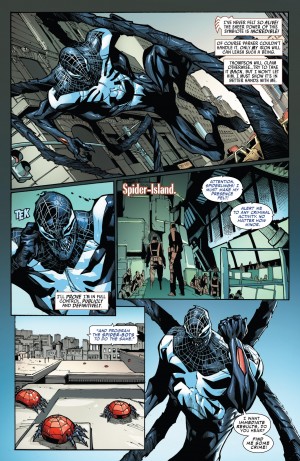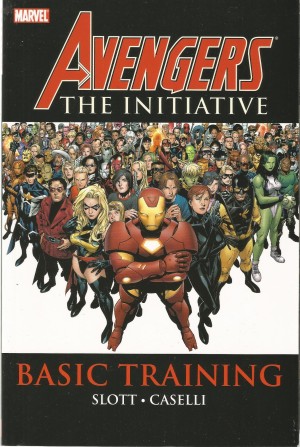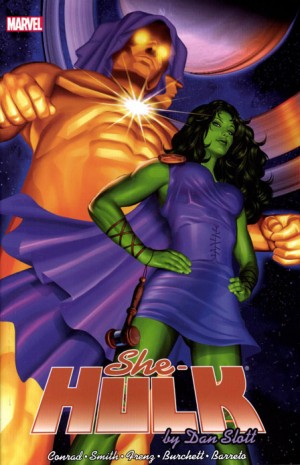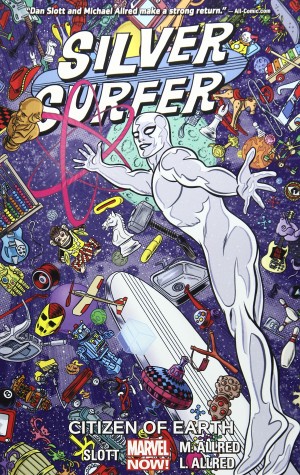Review by Karl Verhoven
Spoilers in review
This conclusion to the Superior Spider-Man sequence doesn’t quite hit the highs of the previous books, lacking as many surprises and Peter Parker’s eventual return to being Spider-Man relying on some idle plotting that’s usually anathema to Dan Slott. That said, Slott’s a superior writer of superhero graphic novels, so they can withstand the odd mis-step and remain very readable.
Three main longer pieces are supplemented by what were originally published as annuals, both written by Christos Gage, who collaborates with Slott on everything else. Both are perfectly okay, but not as strong as when Gage and Slott work together.
If there’s a theme connecting the continuing story of Otto Octavius as Spider-Man it’s hubris. In one sense he’s proved himself better, or superior, as he’d have it, by virtue of being a proactive crime-fighter applying a wealth of technological methods enhancing Spider-Man’s effectiveness. He is a technological genius, but his ego refuses to concede anyone may be his equal, so that’s also his downfall. Throughout the series we’ve been dropping in on someone collecting everyone who’s used variations on the Green Goblin’s technology, and that eventually explodes, partially due to Octavius being unaware they’ve circumvented his technology.
Before that we have a desperate battle to prevent an event that will have ramifications throughout time, with Spider-Man from 2099 dropping by, and the Superior Spider-Man’s first encounter with Venom. Rarely has any Spider-Man/Venom clash been a walkover for the Webslinger, but because he believes himself to be better, Octavius believes he can control the Venom symbiote and this will make him even more effective. “Your plebeian brain cannot hope to command a creature like this. But with my mind bringing it to heel… There is no limit to what I can do.” Spot the mistake.
After that the confrontation with the Goblin King and allies moves into full swing, and by the end of it Peter Parker is again Spider-Man and the continuity progresses into Worldwide. Considering much was made of expunging Parker’s residual presence in the previous book, it could be considered a cheat that it didn’t work. Yes, everyone knew Peter Parker would be back at some stage, and Slott’s taken us on a great adventure in the meantime, but it’s lazy plotting, not even tied into the sin of pride that’s a thread through the remainder of the book, although that would just about work. Overlook that, and the story’s a page turner.
In terms of art it’s Giuseppe Camuncoli, Humberto Ramos and Ryan Stegman responsible for the bulk in their contrasting styles. Camuncoli is an exemplar of efficient real life presentation, while Ramos is a talented cartoonist not always concerned about story continuity, and with a penchant for considerable figure distortions. Stegman is a midway point, edging more to cartooning. Other artists contribute smaller selections, with Philippe Briones, Marcos Martin, Javier Rodriguez, and Will Sliney, about whom there can be no complaints.
This material is also found in Superior Spider-Man: The Complete Collection Vol. 2, and combined with almost all the remainder of the run as the Superior Spider-Man Omnibus.
Just in case it matters, the Superior Spider-Man series was later appended by two further issues slotting into the time travel story with Octavius visiting 2099, and, somewhat mystifyingly, these aren’t included in a collection published six months later.
